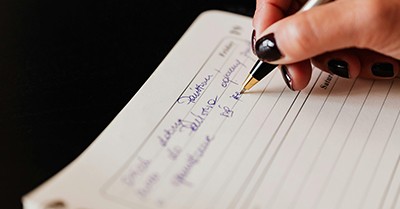Writing a progress report for early childhood education in Australia involves capturing a child's learning journey in a way that is clear, balanced, and informative for families.
Strategies For Writing Progress Reports
- Detailed Observations: Take notes on each child's activities, behaviors, and interactions to provide a well-rounded view of their development.
- Clear and Simple Language: Use language that is easy for families to understand, avoiding jargon.
- Balanced Approach: Highlight both strengths and areas for improvement to give a complete picture of the child's progress.
- Use Examples: Include photos or samples of the child's work to support your observations.
- Developmental Areas: Track progress in key areas such as social-emotional, language, cognitive, and physical skills.
- Engagement with Families: Ensure the report fosters communication between educators and families, helping parents support learning at home.
- Lesson Planning: Use insights from the report to tailor instructional strategies and activities to each child's needs.
What Key Components Should I Include In My Report?
A strong early childhood progress report should include the following key components:
- Child’s Information: Name, age, and class details.
- Developmental Areas: Track progress in social-emotional, language, cognitive, and physical skills.
- Observations & Examples: Specific instances of learning, interactions, and achievements.
- Strengths & Areas for Growth: Balanced feedback highlighting both accomplishments and areas needing support.
- Family Engagement: Insights on how parents can support learning at home.
- Lesson Planning Insights: How observations inform future teaching strategies.
- Visual Documentation: Photos or samples of the child’s work to illustrate progress.
Effective Ways To Highlight Strengths
Highlighting strengths in an early childhood progress report is essential for building confidence and encouraging continued growth. Here are some effective ways to do it:
- Use Positive Language: Frame observations in an encouraging way, focusing on what the child does well.
- Provide Specific Examples: Instead of general praise, mention particular instances where the child demonstrated a skill or positive behavior.
- Celebrate Growth: Highlight improvements over time, showing how the child has progressed.
- Balance with Areas for Development: Strengths should be emphasized alongside constructive feedback to create a well-rounded report.
- Include Visuals: Photos or samples of the child's work can illustrate their achievements.
- Make It Personal: Use the child’s name and describe their unique qualities to make the report feel individualized.
Examples Of Progress Report Phrases
Here are some strong progress report phrases you can use to highlight a child's development:
-
Social-Emotional Development:
- "Shows confidence in interacting with peers and forming friendships."
- "Demonstrates empathy and kindness towards others in group activities."
-
Language & Communication Skills:
- "Expresses thoughts clearly and listens attentively during discussions."
- "Enjoys storytelling and is developing a strong vocabulary."
-
Cognitive & Problem-Solving Skills:
- "Approaches challenges with curiosity and persistence."
- "Demonstrates an ability to recognize patterns and solve simple problems."
-
Physical Development:
- "Shows coordination and control in gross motor activities like running and jumping."
- "Demonstrates fine motor skills through drawing and writing exercises."
Linking To The EYLF
Linking your progress report to the Early Years Learning Framework (EYLF) ensures that children's learning and development align with national standards in Australia. Here’s how you can do it:
-
Use EYLF Outcomes: Structure your report around the five EYLF outcomes:
- Children have a strong sense of identity – Highlight how the child expresses confidence, independence, and social connections.
- Children are connected with and contribute to their world – Show how they engage with their environment and demonstrate respect for diversity.
- Children have a strong sense of wellbeing – Document their emotional resilience, physical health, and self-care skills.
- Children are confident and involved learners – Describe their curiosity, problem-solving abilities, and engagement in learning experiences.
- Children are effective communicators – Note their verbal and non-verbal communication skills, literacy development, and use of technology.
-
Link Observations to EYLF Principles: Connect your observations to play-based learning, relationships, and holistic development.
-
Use EYLF Language: Incorporate terms from the framework, such as belonging, being, and becoming, to align with its philosophy.
-
Provide Examples: Show how activities and interactions support EYLF outcomes, such as group play fostering social skills or storytelling enhancing communication.
Further Reading
Writing Prompts and Phrases For Yearly Reports On Children
Report Card Comments
Descriptive Words For Documentation, Observations and Reports
Practical Examples For Writing Transition Statements
